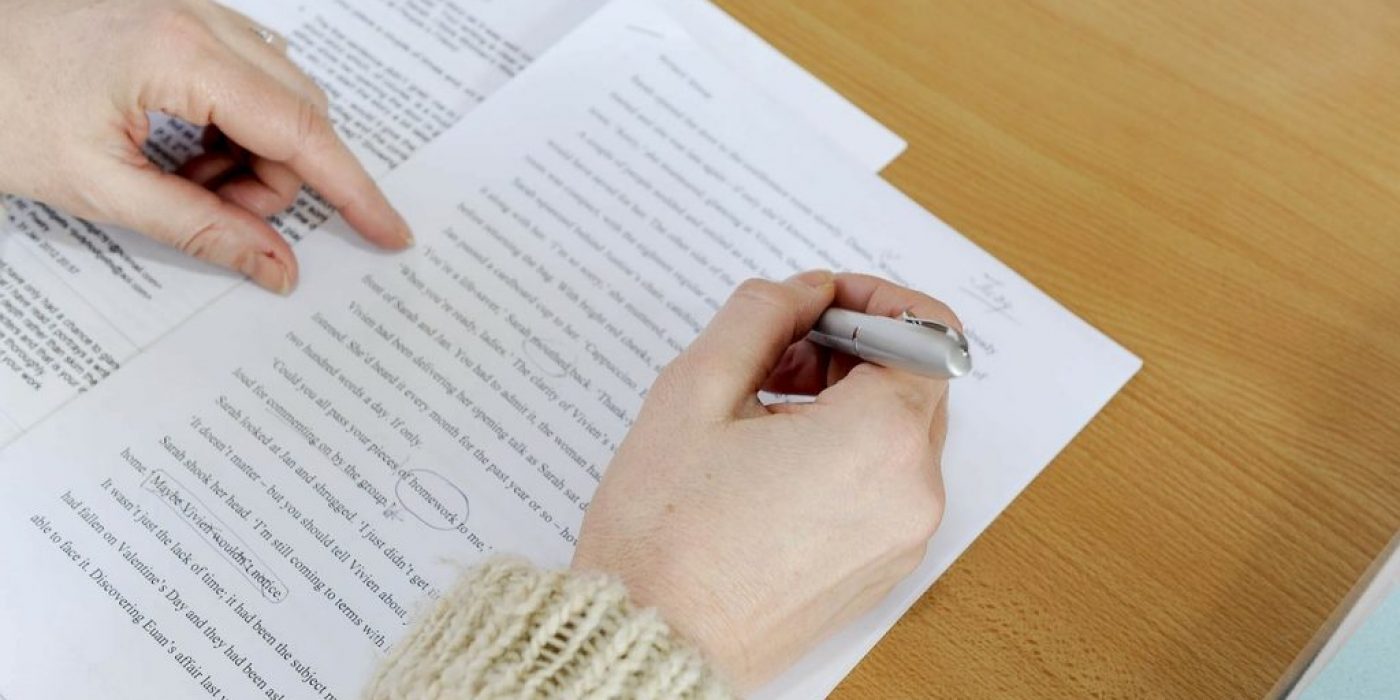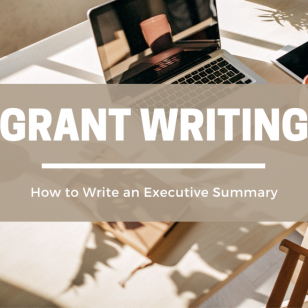By Craig Klose
Contributing Writer
You’ve written a grant proposal. It looks great. All the pieces seem to be in place. But you’re not done! You must revise a grant proposal — and revise and edit and review and revise again — to make it perfect.
To review, there are numerous steps in developing and writing a grant proposal. They usually go something like this:
- Researching grant opportunities
- Project design and development (these first two often happen simultaneously)
- Recruiting project collaborators
- Building your grant-writing team
- Writing the first draft
- Receiving critique/feedback (either from your nonprofit executive director or, in certain circumstances, grantmakers who provide technical assistance and project advisement to applicants)
- Revisions (second, third and subsequent drafts)
- Back to the executive director or the grantmaker for final round of feedback
- Writing the final draft (making final tweaks to your grant proposal)
- Submitting the final application
For this blog, we’ll take a deeper dive into steps 6 – 10 of the grant proposal revision steps above, which focus on the all-important critique and revision process.
Preparing for Success: How to Revise a Grant Proposal to Win BIG Funding
There are many different reasons you could be writing a grant proposal. You may be the chief executive writing a grant application for your own small nonprofit. You could be an employee of that organization (perhaps a professional grant writer). Or you could be a professional grant writer writing the grant for one of your longtime clients.
You will note, in the above scenarios, that the person writing the grant moved a little farther from the executive director of the organization, who is theoretically the person from whom the grant emanates. Is this a problem? Not always, but as you move farther down the chain of command your work requires a higher degree of planning and coordination. But everyone can play an important role in the grant proposal-revision process.
Look at your proposal through the eyes of an editor:
Revising Ideas and Project Design (Content)
Here is where you and your team take a second look at your project idea:
- Does it make sense?
- Do all the moving parts flow together?
- Who does what and when and why?
- What will be the positive outcome(s)?
- Who or how many are positively benefited?
Does it look like the result is worth what is being expended to achieve it (think not only of cost in terms of dollars but also in human resources)? This can be a traditional cost/benefit analysis. On paper, does it look as if your organization can manage the project? Have you completed projects of similar scale and ambition? You may even seriously need to examine the question: Is the project even worth doing?
Can you identify any duplicated effort? Are other community, state or regional providers doing the same thing, serving the same audience? Have you addressed sustainability? Will you be able to continue the programs or service beyond the grant period? Will the project have benefits that last beyond the grant period (for instance, training)? Some funders put a great emphasis on sustainability and make it a question in the narrative of the grant application.
Revising How You Express Your Ideas (Style)
Here’s a helpful exercise while working on a grant proposal: re-read your narrative every day when you begin working on it. This will give you a chance to see it with fresh eyes at the beginning of your work day. Are you saying what you meant to say? Are you saying it so someone else can understand it as you do?
Consider your audience. Grant writers sometimes walk a fine line between assuming that the audience is generally knowledgeable about the grant subject area and assuming they know nothing. I tend to err on the side of explaining too much rather than too little. This is especially true if you have a highly-technical subject area. Remember that in some cases there will be several different readers who review separate sections of your grant. Will all of them have the same level of knowledge as our fictional tech lab leader? Probably not. So, as a general rule, aim your writing to an audience that has an introductory level knowledge of your field.
BE GRATEFUL FOR CRITICISM!
At this point I need the best, most experienced writers to repeat after me: “I AM GRATEFUL FOR CRITICISM,” “I AM GRATEFUL FOR CRITICISM”… Repeat as many times as necessary until it becomes true. Remember that everyone you are working on the grant with is on the same team, literally and figuratively! Everyone wants the same outcome: the funder, your boss, your client, the executive director and board all want to end up with the best grant proposal possible, and all are working to get to that place. Use all the talent on your team.
Constructive criticism is your friend.
Now for the Second Draft
At this point you have gotten the first draft back from the various people who have reviewed it and are ready to respond to their feedback. Now, while I am advocating for a wide open mind when it comes to feedback, it is true that there is such a thing as too much feedback. What if you get input from all six people on your team? Read all of it. You never know where you are going to come across good advice or a good catch of a mistake. Then, after you have digested all of it, take careful note of the revisions suggested by your boss and by the person who has the most knowledge and experience in the particular field of the grant.
Start your second draft with the structural changes first. If you need to add a section, delete a section or reorder your questions, do this first. Next, attack the content changes within each individual section. Lastly, read over the revised draft for unity and coherence of expression. Make sure there is a logical movement from one thought to another within a section and from one idea to another from section to section.
Repeat the Drafting Steps as Many Times as Necessary
After you have finished your second draft, pass it back to the folks whose revisions you primarily utilized (your executive director and project director). Ask them to make sure that you understood their suggestions and addressed them effectively. This back and forth, fine-tuning process is the meat of the revision process and can be repeated as many times as necessary to get the proposal exactly where it needs to be.
Review Past Successful (and Unsuccessful) Grant Proposals
Many grant-writing professionals have several years’ worth of successful (and unsuccessful) grants on file from previous funding applications. These are an invaluable resource. They can help you answer the following:
- How did a past grant writer address particular questions?
- What are some “boilerplate” items that can be used in subsequent grant applications?
- How did the writer use participant and community stories to illustrate need and effectiveness?
- Which proprietary and community data did previous processes use? (And how did they present that data?)
- How did the grant writer
- How did the organization order its materials?
- How did it tackle the tricky sustainability question?
And remember, past unsuccessful grant proposals can be just as effective at informing a grant writer what NOT to do. So what if you are the executive director of a small nonprofit and don’t have a treasure trove of old grants to mine? This is where you make use of the collegial relationships you have with your colleagues in the field. Many professionals are happy to share copies of their past successful grant proposals to colleagues. They may first want to redact any proprietary or financial information, but redacted proposals will still be extremely helpful, especially if you are facing a roadblock in your writing.
How to Revise a Grant Proposal: Follow the Golden Rule
Now matter what step you’re on in your grant-writing journey, you must always follow the golden rule: read and follow the request for proposals (RFP) exactly! Read the application instructions carefully. Now repeat. Grant applications instructions, especially those for the narrative are structured very carefully and intentionally by the funder. This is how they want to see your information.
Resist the urge to be creative. The application instructions should be used as the outline of your narrative. I always start writing my narratives by copying all the questions, in exact order, from the RFP and deleting the instruction parts. You now have the skeleton on which you will hang the flesh of your own narrative.
One thing that can be frustrating about writing and revising grant narratives is the maddening amount of seeming repetitiveness built into so many grant applications. Don’t try to “fix” this, as I did myself as a new grant writer back many years ago. If they ask what looks like the same question in three different places, then give them the answer in three different places. Provide the information requested in the form and places the funder wants it.
If you need help with grant writing, revision and submission for your small nonprofit, Southern Tier Communications Strategies, LLC is here to help. Contact Kelsey Boudin, STCS President and Founder, at ke****@************************es.com for more information.








October 13, 2022 @ 7:17 pm
I like the above read, it is very informative. Indeed revising several times is the key. I like the several points of emphasis laid out bare.